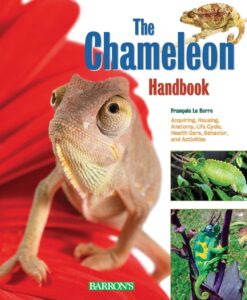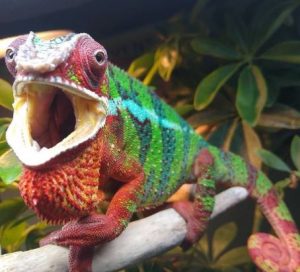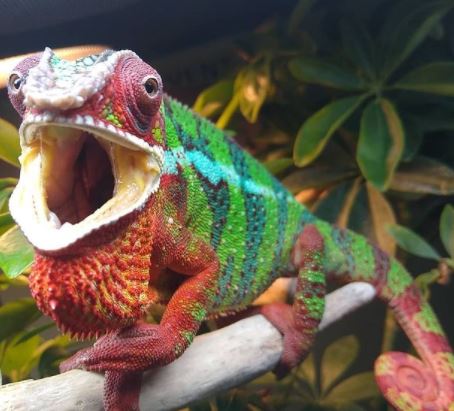How much are chameleons
How much are chameleons: Chameleons, enigmatic creatures of the reptile world, have captivated the imagination of humans for centuries. With their remarkable ability to change color and their unique anatomical features, these fascinating reptiles have become the subject of intrigue and awe. In this article, we delve into the captivating realm of chameleons and explore their diverse species, mesmerizing characteristics, and intriguing price range.
Definition of Chameleons
Chameleons belong to the family Chamaeleonidae, a group of reptiles known for their distinctive physical attributes. These arboreal creatures are renowned for their exceptional camouflage abilities that allow them to blend seamlessly with their surroundings.
With a long, prehensile tail that aids in gripping branches and specialized zygodactylous feet (having two toes pointing forward and two backward), chameleons are perfectly adapted for a life spent climbing trees in search of prey or shelter. One of the most striking features of chameleons is their ability to change color rapidly.
This remarkable skill is not merely an act of camouflage; rather, it serves multiple purposes such as communication, temperature regulation, and emotional expression. By manipulating pigments beneath the surface layer of their skin called chromatophores, chameleons can produce an astonishing array of colors ranging from vibrant greens and blues to earthy browns and yellows.
Brief Overview of Chameleon Species and Their Unique Characteristics
The world is home to an array of enchanting chameleon species each characterized by its distinct appearance and behavior. Let’s delve into some notable examples:
Veiled Chameleon (Chamaeleo calyptratus):
 Native to Yemen and Saudi Arabia, this impressive species earned its name from the prominent casque on its head resembling a veil or helmet. Veiled chameleons are known for their large size, reaching up to 2 feet in length.
Native to Yemen and Saudi Arabia, this impressive species earned its name from the prominent casque on its head resembling a veil or helmet. Veiled chameleons are known for their large size, reaching up to 2 feet in length.
Their striking coloration includes vibrant greens and blues, often adorned with intricate patterns. Additionally, males possess a captivating display of horns and flaps that they use as a form of territorial and mating assertion.
Panther Chameleon (Furcifer pardalis):
Hailing from Madagascar, the Panther chameleon is celebrated for its breathtaking ability to display a wide range of vibrant colors.
This species showcases an extraordinary diversity of color morphs and locales, allowing enthusiasts to marvel at an array of patterns and hues. From electric blues to fiery reds and even black stripes, the Panther chameleons’ ability to transform themselves into living works of art is truly awe-inspiring.
Jackson’s Chameleon (Trioceros jacksonii):
Native to East Africa, specifically Kenya and Tanzania, Jackson’s chameleon is distinguished by its three distinct horns: one on the snout and two on the forehead.
Males possess more vivid coloration compared to females, featuring shades of green with accents of yellow or blue. Known for their slow-moving nature and arboreal lifestyle, Jackson’s chameleons enchant observers with their gentle demeanor and intricate camouflage techniques.
These examples represent just a glimpse into the diverse world of chameleon species. Each possesses its own unique set of characteristics that continue to captivate reptile enthusiasts worldwide.
Chameleon Species and Their Price Range
The world of chameleons is as diverse as it is captivating. These enchanting reptiles come in various species, each possessing its own unique set of characteristics and price range. From the majestic Veiled Chameleon (Chamaeleo calyptratus) to the vibrant Panther Chameleon (Furcifer pardalis) and the intriguing Jackson’s Chameleon (Trioceros jacksonii), their prices fluctuate based on a combination of factors such as age, coloration, gender, locale, color morphs, lineage, and health.
Veiled Chameleon (Chamaeleo calyptratus)
One of the most popular chameleon species among enthusiasts is the Veiled Chameleon. This species hails from Yemen and Saudi Arabia and can thrive in a variety of captive environments. On average, Veiled Chameleons are priced between $50 and $150.
However, it’s essential to note that several factors can influence their cost. The first significant factor affecting Veiled Chameleon pricing is age.
Juvenile specimens are generally less expensive than adults due to their smaller size and less pronounced coloration. As they mature into adulthood, their distinctive hues intensify, making them more desirable to collectors.
Moreover, coloration plays a vital role in determining a Veiled Chameleon’s value. Specimens with exceptional pigmentation or rare color variations may command higher prices compared to those with more typical appearances.
Panther Chameleon (Furcifer pardalis)
 The mesmerizing Panther Chameleons are known for their striking beauty and wide range of colors across different locales throughout Madagascar. These magnificent creatures captivate chameleon enthusiasts worldwide with prices typically ranging from $150 to $400. When it comes to Panther Chameleons, the primary factors influencing their price include locale, color morphs, and lineage.
The mesmerizing Panther Chameleons are known for their striking beauty and wide range of colors across different locales throughout Madagascar. These magnificent creatures captivate chameleon enthusiasts worldwide with prices typically ranging from $150 to $400. When it comes to Panther Chameleons, the primary factors influencing their price include locale, color morphs, and lineage.
Different locales exhibit slight variations in coloration and patterning, making certain populations more sought after than others among enthusiasts. Consequently, specimens from rarer or more visually striking locales often command higher prices.
Furthermore, Panther Chameleons are available in numerous color morphs with distinct patterns and hues. Morphs such as blue bar ambilobe or red body blue bar nosy be are often priced on the higher end due to their uniqueness and desirability among collectors.
Jackson’s Chameleon (Trioceros jacksonii)
Hailing from Kenya and Tanzania, Jackson’s Chameleons are renowned for their three horn-like projections on their heads. These captivating reptiles typically range in price from $100 to $200. The cost of Jackson’s Chameleons is influenced by several factors.
Age plays a role, with younger specimens generally being less expensive due to their smaller size. Additionally, gender can affect the price point as males tend to have brighter colors and larger horns compared to females.
Last but not least, health is a crucial factor when considering the cost of Jackson’s Chameleons. Healthy specimens free from any diseases or infections are valued higher than those with underlying health issues or poor conditions.

Rare and Expensive Chameleons
Blue-eyed Leucistic Panther Chameleon (Furcifer pardalis)
The Blue-eyed Leucistic Panther Chameleon, also known as Furcifer pardalis, is undoubtedly one of the most sought-after and prized chameleons in recent times. Its unique appearance and rarity make it a highly coveted species among reptile enthusiasts.
This particular morph of the Panther Chameleon exhibits a stunning combination of pale, ghostly skin with vibrant blue eyes, making it truly mesmerizing to behold. What sets this chameleon apart from others is its lack of pigmentation, resulting in an almost albinistic appearance.
The absence of melanin in its skin leads to an enchanting blend of whites, creams, and pale pinks that cascade over its body. The striking feature lies within its eyes that exhibit an intense blue hue rarely seen in other chameleons.
Due to these remarkable characteristics and limited availability, the Blue-eyed Leucistic Panther Chameleon has become highly coveted by collectors and reptile enthusiasts alike. As for the price tag attached to this exquisite creature, it certainly matches its rarity.
On average, acquiring a Blue-eyed Leucistic Panther Chameleon can cost anywhere between $5,000 – $10,000 or even more depending on various factors such as lineage purity and overall quality. The exclusivity coupled with the challenges involved in breeding this morph contribute significantly to its high market value.
Pygmy Leaf Chameleons (Brookesia spp.)
On the opposite end of the size spectrum lies another fascinating group called Pygmy Leaf Chameleons from the genus Brookesia. These tiny chameleons are known for their diminutive stature and astonishing camouflage abilities. With adult sizes ranging between 1-3 inches depending on the species, they hold the distinction of being the smallest chameleons in the world.
Found primarily in Madagascar and surrounding islands, Pygmy Leaf Chameleons have evolved to blend seamlessly into their environment. Their small size allows them to mimic leaves and twigs with exceptional accuracy, making them practically invisible to predators and unsuspecting prey.
These miniature marvels possess intricate patterns and colorations that aid in their disguise, further enhancing their ability to vanish among foliage. Due to their unique characteristics and limited distribution, Pygmy Leaf Chameleons have become highly sought after by reptile enthusiasts who appreciate the intricacy of nature’s design.
The average cost for a pair of these captivating creatures typically ranges from $200 – $500 depending on the specific species and availability. While they may be small in size, their allure and remarkable adaptations make them a valuable addition to any chameleon collection.
Rare and expensive chameleons captivate our imagination with their extraordinary appearances and scarcity in the reptile world. The Blue-eyed Leucistic Panther Chameleon stands as an ethereal masterpiece boasting pale skin tones accentuated by stunning blue eyes—an exquisite rarity that commands a price ranging from $5,000 – $10,000 or more.
On the other side of this spectrum lies the enchanting Pygmy Leaf Chameleons—tiny wonders that camouflage themselves seamlessly within foliage—a pair of these remarkable creatures can typically be acquired for approximately $200 – $500. Both these remarkable creatures exemplify nature’s ability to create beauty in its most unique forms while reminding us of the inherent value found within biodiversity.
Factors Influencing the Cost of Chameleons
Morphs and Color Variations
 Chameleons exhibit an astonishing array of morphs and color variations, which greatly impacts their price. Morphs refer to genetic mutations that result in distinct physical characteristics. These morphs can include variations in body shape, scale patterns, or even the size and shape of horns.
Chameleons exhibit an astonishing array of morphs and color variations, which greatly impacts their price. Morphs refer to genetic mutations that result in distinct physical characteristics. These morphs can include variations in body shape, scale patterns, or even the size and shape of horns.
For example, Panther Chameleons have various morphs based on their geographic location, such as Ambanja or Nosy Be morphs. These unique features make certain chameleons highly desirable among collectors and enthusiasts alike.
The coloration of a chameleon is another crucial factor influencing its price. Brighter and more vibrant colors tend to be more sought after compared to duller shades.
This is because colorful chameleons are visually striking and captivating to observe. Additionally, some colorations may be rarer due to specific genetic traits or natural occurrences, further increasing their desirability and subsequently their price.
Age and Size
Age plays a significant role in determining the cost of a chameleon. Younger chameleons are generally less expensive than adults due to their smaller size and limited coloration at a young age.
As they mature, develop vibrant hues, and showcase more intricate patterns, their value increases significantly. Size also affects the price of a chameleon as larger individuals often command higher prices.
Larger specimens are attractive to buyers who seek impressive display animals or those seeking breeding stock with robust genetics for offspring production. The combination of age and size contributes synergistically to the value proposition when considering these captivating creatures.
To sum up how much are chameleons
The cost of chameleons can vary significantly depending on various factors that affect their desirability in the market. Morphs with unique physical characteristics or rare color variations tend to be more expensive due to their exclusivity.
Age and size also play key roles, with younger chameleons being less expensive compared to mature adults with vibrant hues. Ultimately, the price of a chameleon is a reflection of its distinctive qualities and the demand it generates among collectors and reptile enthusiasts.
Remember, acquiring a chameleon should not solely be driven by its cost but also by one’s commitment and ability to provide proper care for these remarkable creatures. Investing in their well-being, habitat, and nutrition will ensure that you have a long-lasting and rewarding relationship with your chameleon companion.
Further Reading:
- Best Turtle Substrate For Your Pet Tank
- Coconut substrate for chameleons
- Caught my Chameleon eating moss


